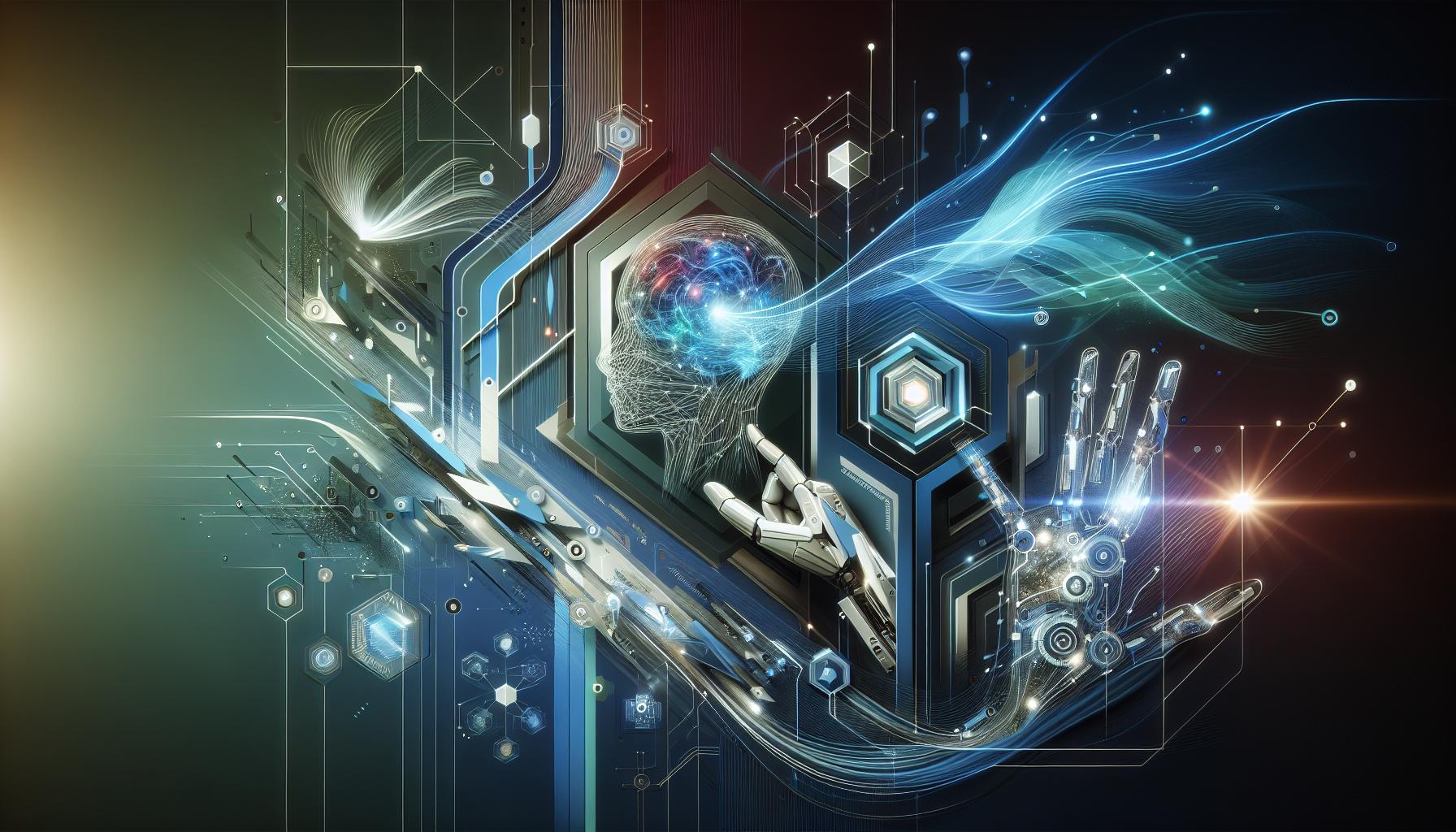As educational institutions increasingly integrate AI tools into their curricula, questions arise about the potential for plagiarism in digital presentations. This article delves into whether popular detection software, like Turnitin, can identify AI-generated content in PowerPoint presentations, highlighting its relevance in maintaining academic integrity and guiding responsible tech use in learning environments.
Understanding Turnitin’s Role in Academic Integrity
In today’s rapidly evolving educational landscape, maintaining academic integrity has never been more critical. As students increasingly use AI tools, like those available for PowerPoint presentations, institutions need reliable methods to detect potential breaches of integrity. A key player in this arena is Turnitin, renowned for its robust plagiarism detection capabilities. The question that arises is: can Turnitin effectively identify original work from an AI-generated context, such as presented in specific formats like PowerPoint?
Turnitin’s advanced algorithms are designed not just to compare text but to recognize patterns that may indicate AI utilization. By analyzing submissions for similarities against a vast database of academic literature, web pages, and previously submitted student work, Turnitin generates a Similarity Report that highlights matching text and provides a similarity score. This approach enables educators to determine if a student’s work genuinely reflects their effort or if it relies heavily on AI-generated material.
How Turnitin Enhances Academic Integrity
Turnitin fosters a culture of academic honesty through several key features:
- Comprehensive Coverage: Turnitin checks submissions against an extensive database, ensuring a wide-reaching assessment of originality.
- Real-time Feedback: Students can view their similarity scores and revise their work before final submission, reinforcing learning and understanding of proper citation.
- Educational Resources: Turnitin not only serves as a detection tool but also provides educational materials on academic integrity, helping students internalize the principles of honest scholarship.
In situations where students utilize AI for creating presentations, educators can look for specific indicators in the Similarity Report. For example, transcripts from AI-generated PowerPoint presentations, if not properly cited or paraphrased, would likely show high similarity scores. The evaluation of these reports is crucial as it prompts discussions around what constitutes originality in a modern academic context.
Given the increasing sophistication of AI, understanding Turnitin’s role in promoting academic integrity is more important than ever. As educators and students navigate the complexities of technology’s integration into learning, Turnitin serves as a vital tool, ensuring that integrity remains at the forefront of educational practices while addressing emerging concerns, such as those surrounding AI-generated content in various formats.
The Rise of AI-Generated Content in Presentations
The integration of AI-generated content into presentations marks a significant evolution in how information is shared and consumed in educational and professional environments. As tools like ChatGPT and other advanced technologies become more sophisticated, they are increasingly utilized to generate complete presentations or enhance existing ones. This surge in AI content creation has sparked discussions around authenticity and the ability of traditional detection methods, such as those provided by Turnitin, to identify AI-generated content within platforms like PowerPoint.
AI-generated content has the potential to streamline the presentation creation process, offering users a rapid way to compile data, create visuals, and structure narratives. With AI’s ability to analyze vast amounts of information quickly, it can summarize research findings, generate insights, and even suggest design formats that can captivate an audience. However, this convenience raises questions about originality and academic integrity, particularly in educational settings where presentations are a common form of assessment. The broader question remains: can Turnitin effectively detect AI-generated sections within PowerPoint presentations?
Recent advancements in Turnitin’s detection capabilities illustrate a robust response to this challenge. Their specialized tools are designed to identify instances of AI writing paired with traditional plagiarism checks. This critical function not only highlights the integrity of student work but also serves as an educational resource, guiding users toward developing their own authentic voice. Educators can employ these tools to foster deeper understanding and promote genuine learning experiences rather than superficial content generation.
To navigate the complexities posed by AI in presentations, it is advisable for users—whether students or professionals—to blend AI assistance with personal insights and creativity. Here are some actionable steps to consider:
- Use AI as a Supplement: Employ AI tools for research and initial content generation, then refine and personalize the material to reflect your unique perspective.
- Stay Informed: Regularly update your understanding of AI tools and detection capabilities, such as those offered by Turnitin, to ensure compliance with academic standards.
- Engage with Peer Feedback: Collaborate with peers to review and critique presentations to ensure that the blend of AI and personal input enhances clarity and effectiveness.
- Emphasize Originality: Focus on developing original ideas—even when using AI tools—for a more authentic and meaningful presentation experience.
By adopting these strategies, individuals can harness the benefits of AI in presentations while upholding academic integrity and personal authenticity in their work.
How Turnitin Identifies Similarities in Text and Media
In an age where academic integrity is paramount, Turnitin serves as a crucial ally in the fight against plagiarism, utilizing advanced technology to ensure originality in student submissions. With an expansive database that includes over 99.3 billion current and archived web pages and 1.8 billion student papers, Turnitin compares submissions against a comprehensive range of sources to flag similarities. This process is particularly relevant in evaluating whether AI-generated content, such as PowerPoint presentations, holds up to the standards of authenticity that educators expect.
Text and Media Analysis
Turnitin’s approach to identifying similarities goes beyond mere text matching. The platform employs sophisticated algorithms designed to scrutinize not only written text but also media elements present within documents. For example, when analyzing a PowerPoint presentation, Turnitin can detect instances of copied text from various sources, as well as similarities in structure, style, and design elements of the slides. This holistic detection capability means that even if a student alters the wording or modifies images, Turnitin’s algorithms can still identify potential cases of plagiarism effectively.
- Comprehensive Database: Matches content against billions of web pages, academic articles, and student papers.
- Algorithmic Analysis: Uses advanced algorithms to detect similarities not just in text but in formatting and presentation.
- Similarity Scores: Provides a percentage score indicating the degree of similarity found, allowing educators to gauge the originality of the submission.
In practical terms, educators can utilize the Similarity Report generated by Turnitin to address potential plagiarism concerns. This report highlights matched content, allowing for in-depth discussions about proper citation practices and the importance of original work. Moreover, it provides a clear visual representation of the similarity between the submitted work and existing literature, creating a conducive environment for learning and improvement.
Understanding how Turnitin operates can help students make informed choices about their work, especially in an era where AI technologies are being increasingly integrated into academic tasks. As such, it answers the question, “Can Turnitin detect AI in PowerPoint?” by showing that while AI might streamline the creation process, the tool’s sophisticated detection capabilities remain a critical line of defense against intellectual dishonesty. Students who grasp these capabilities are better positioned to engage with their assignments in a more original and authentic manner.
Can AI-Generated Slides Evade Detection?
As artificial intelligence continues to advance rapidly, many users wonder about the implications for content creation, particularly in academic settings. One pressing concern is whether AI-generated slides can successfully evade detection by tools like Turnitin. Although Turnitin is renowned for its ability to identify instances of plagiarism and unoriginal content in written works, its effectiveness in detecting AI-generated PowerPoint presentations remains a topic of examination and debate.
Understanding Turnitin’s Capabilities
Turnitin has recently expanded its features to include AI writing detection, having integrated this capability into its originality checking software. However, the question lingers: Can Turnitin scan PowerPoint files and determine if the content was created by an AI model? Current evidence indicates that Turnitin’s primary focus has been on analyzing text-based submissions, primarily in written formats. Consequently, images, charts, or other non-text elements within PowerPoint presentations could present challenges for the detection algorithms.
Factors Influencing Detection Success
Even when focusing solely on text, the ability of detection tools like Turnitin to discern AI-generated content isn’t foolproof and can be influenced by several factors:
- Quality of Content: AI-generated slides that exhibit a high level of coherence and alignment with human writing styles may be more challenging to identify.
- Complexity of Language: Simple, straightforward text may not trigger detection, while more intricate and nuanced vocabulary could raise flags.
- Contextual Relevance: If the AI-generated slides are custom-tailored to a specific academic context or assignment, they might blend in more seamlessly.
Real-World Implications
Academic institutions are increasingly on alert regarding the rise of AI tools impacting student submissions, including slide presentations. Educators should be vigilant and encourage originality by implementing guidelines around the use of AI technologies. For example, they might ask students to submit drafts of their presentations for review or require them to explain their content verbally to demonstrate understanding.
Ultimately, while detection tools like Turnitin are evolving, their capability to pinpoint AI-generated slides within PowerPoint presentations is still limited. This underscores the importance of fostering academic integrity and innovation, pushing educators and students alike to focus on creating authentic, original content.
The Technology Behind Turnitin’s Detection Mechanisms
While the emergence of AI tools has revolutionized education and content creation, it has simultaneously posed challenges for maintaining academic integrity. Turnitin, a leading plagiarism detection solution, has developed sophisticated mechanisms to identify not just traditional plagiarism but also AI-generated content. The technology behind these detection mechanisms employs advanced machine learning algorithms that analyze text patterns, structure, and semantics to determine the likelihood of human versus AI authorship.
How Turnitin Differentiates Between Human and AI Writing
One of the primary methods Turnitin utilizes is its proprietary AI writing detection technology. This tool specifically looks for linguistic features typical of AI writing, such as repetitive phrasing, lack of personal nuance, and structure that may not align with a human’s natural flow. The tool is designed to recognize the telltale contractions and simplified complexities of AI-generated text, enabling educators to discern the authenticity of students’ submissions.
The checking process involves several steps:
- Text Analysis: Turnitin first breaks down the submitted text into syntactic and lexical components, assessing their patterns for common AI markers.
- Comparative Evaluation: Next, the tool compares the text against a vast database, including previous submissions and known AI writings, allowing it to identify unique writing signatures.
- Probability Scoring: Finally, Turnitin generates a probability score that indicates the likelihood of a piece being written by AI versus a human, thus aiding educators in determining the next steps.
Real-World Implications of AI Detection Technology
This capability is significant, especially in environments where students may misuse AI tools to circumvent learning processes. For instance, educators can now hold students accountable not just for the content they produce but also for the manner in which they produce it. This aligns academic practices with technological advancements, ensuring that while tools like AI are embraced, educational integrity remains a priority.
In scenarios where a submission is flagged as potentially AI-generated, instructors have a few avenues for addressing the issue. They can engage students in discussions about originality and the learning process, provide opportunities for resubmission, or even offer workshops on proper writing techniques. This application of Turnitin’s technology fosters a deeper understanding of academic integrity among students, emphasizing that the value of education lies not only in the final product but in the learning journey itself.
Tips for Students: Crafting Original PowerPoint Presentations
Creating engaging and original PowerPoint presentations can significantly impact your academic success. Not only do they serve as a medium to convey your ideas, but well-crafted presentations also reflect your understanding of the subject matter. With the rising use of AI tools for generating content, it becomes crucial to ensure that your work remains authentic—especially considering tools like Turnitin that are designed to maintain academic integrity by detecting unoriginal content.
To effectively create original presentations, consider the following strategies:
Understand Your Topic Thoroughly
Taking the time to research and understand your topic can greatly enhance the originality of your content. Use a variety of reputable sources to gather information before you start creating your slides. Aim to draw connections between different ideas and incorporate your unique insights. This deeper comprehension enables you to create presentations that reflect your personal understanding and prevents heavy reliance on generic AI-generated text.
Utilize Visuals Effectively
Visuals are a vital component of engaging PowerPoint presentations. Since Turnitin primarily assesses text, integrating relevant images, graphs, and charts not only enhances viewer engagement but also reduces the text content that could be flagged by plagiarism detection tools. Ensure that your visuals are original or properly credited, adding an extra layer of authenticity to your presentation.
Practice Paraphrasing and Citing Sources
When you reference others’ work, paraphrase their ideas instead of copying them verbatim. This approach not only aids in creating original content but also demonstrates your ability to synthesize information. Remember to cite sources appropriately to maintain academic integrity. Using citation tools can simplify this process and ensure you follow the correct formatting guidelines.
Seek Feedback
Before finalizing your presentation, seek feedback from peers or mentors. They can provide insight into the clarity, flow, and originality of your work. Incorporating constructive criticism can help you refine your presentation and enhance its quality. Collaboration fosters new ideas, which can differentiate your work from the overly polished outputs of AI tools.
By applying these techniques, you can craft original PowerPoint presentations that stand out while also being cognizant of Turnitin’s detection capabilities. Focusing on your own voice and interpretation will not only make your presentations more impactful but will also uphold the integrity of your academic work.
The Implications of AI Use in Academic Settings
Amid the rapid evolution of educational technology, the integration of artificial intelligence (AI) tools in academic environments has triggered a profound transformation in how students engage with learning material and complete assignments. Educators and institutions now face the challenge of ensuring academic integrity while adopting these innovative technologies. The question of whether platforms like Turnitin can effectively identify AI-generated content in student submissions, such as PowerPoints, has significant implications for the authenticity of academic work and how assessments are approached in the modern classroom.
AI tools, such as chatbots and large language models, can assist students in generating content quickly and efficiently. However, this ease of access raises ethical concerns regarding originality and authorship. With tools like Turnitin now equipped with AI writing detection capabilities, educators can gain insights into whether a submitted PowerPoint or essay includes portions that may have been generated by AI. According to data, Turnitin’s AI detection tool has flagged multiple submissions, providing educators with a crucial data point to evaluate the authenticity of student work [[1](https://www.turnitin.com/blog/ai-writing-detection-what-academic-leaders-need-to-know-as-technology-matures)].
Potential Consequences for Students and Educators
The implications of relying on AI for academic tasks are manifold. For students, understanding the limits of AI assistance is crucial. Learning to balance the use of AI tools with traditional research and writing practices fosters deeper comprehension and critical thinking skills. Educators are now tasked with revising academic policies to include guidelines on acceptable AI usage, which necessitates clear communication about the repercussions of submitting work that does not reflect a student’s own understanding.
- Enhanced Learning Opportunities: Educators can leverage AI tools to craft engaging assignments that promote creativity while teaching students responsible usage practices.
- Revised Assessment Methods: Exams and projects may evolve, incorporating in-class presentations or oral defenses to ensure comprehension and reduce AI dependency.
- Focus on Original Thought: Encouraging work that emphasizes individual perspectives will cultivate a culture of authenticity in academic environments.
As AI technology continues to develop, the importance of detection tools like Turnitin cannot be overstated. They serve not just as a deterrent against academic dishonesty but as a cornerstone for fostering a more rigorous educational landscape. Institutions that proactively adapt to these changes will not only maintain academic integrity but will also prepare students more effectively for the challenges of an increasingly digital world, where the line between human and AI contributions continues to blur.
Balancing Creativity and Integrity: Best Practices for Using AI Tools
As AI tools increasingly interlace with creative processes, striking the right balance between innovation and ethical standards is imperative. This duality not only ensures the integrity of one’s work but also promotes the responsible use of technology. Particularly in academic settings, where platforms like Turnitin play a crucial role in maintaining originality, understanding how AI can be utilized while adhering to ethical guidelines is essential. The question of whether models like Turnitin can detect AI-generated content in presentations such as PowerPoint amplifies this concern, necessitating a thoughtful approach to AI use.
One of the best practices for leveraging AI tools while maintaining integrity is to prioritize transparency. This means clearly disclosing the use of AI tools in your work. When submitting assignments or presentations, consider adding a note about the AI tools that assisted in your research or composition. This openness not only enhances credibility but also respects the intellectual contributions of both human and machine.
Furthermore, it is vital to combine AI capabilities with personal creativity. Instead of relying solely on AI for content generation, use it as a springboard for your ideas. For instance, if an AI tool generates an outline or initial drafts for a PowerPoint presentation, take the time to reflect and infuse your perspective and unique insights into the final product. This ensures that the work benefits from the efficiency of AI without sacrificing personal touch or originality.
To further guide best practices, here are key steps for effectively using AI tools while preserving creativity and integrity:
- Educate Yourself: Understand the limits and strengths of the AI tools you use.
- Use AI as a Supplement: Treat AI-generated content as a draft that you can refine and personalize.
- Acknowledge AI Contributions: Be transparent about your use of AI to maintain academic integrity.
- Regularly Review AI Policies: Stay updated on institutional policies regarding AI use in academic work.
By adhering to these practices, individuals can enjoy the advantages of AI tools while ensuring that their work remains authentic and credible, thus addressing the concerns raised about detection capabilities in platforms like Turnitin. Maintaining this balance not only aligns with ethical standards but also fosters a richer, more innovative creative environment.
Q&A
Can Turnitin detect AI-generated content in PowerPoint presentations?
Yes, Turnitin can detect AI-generated content in PowerPoint presentations, but its effectiveness may vary. The detection capabilities are mainly designed for written text submitted through its platforms.
Turnitin’s technology focuses primarily on identifying text generated by AI tools and checking for plagiarism in written assignments. When it comes to PowerPoint files, the detection works best if the text is extracted accurately from the slides. For more details on how Turnitin functions, check out their official resources.
What features does Turnitin offer for AI detection in PowerPoint?
Turnitin provides an AI writing detection tool that can analyze submitted content, including text in PowerPoint presentations. This feature is integrated within their existing platforms like Turnitin Feedback Studio.
The tool aims to identify the use of AI-written text within the slide content. However, users should note that detection of non-text elements like images or graphics is not covered. For further specifics, see Turnitin’s AI detection guides.
How effective is Turnitin at recognizing AI content in PowerPoint?
The effectiveness of Turnitin in recognizing AI-generated content in PowerPoint can be moderate; it is geared primarily for documents rather than slide formats. Accuracy may depend on how text is presented in the slides.
Since Turnitin’s AI detection tools are primarily focused on text-based submissions, results could vary. If the text is presented as straightforward content in the slides, detection will be more accurate. For more about this, visit the Turnitin website.
Can I check if my PowerPoint presentation contains AI-generated text with Turnitin?
Yes, you can check for AI-generated text in your PowerPoint presentation using Turnitin. When you upload your file, it analyzes the text within the slides to determine its origin.
Keep in mind that the analysis works best when the text is clear and easily processed. For more information on how to properly submit your file for analysis, visit Turnitin’s guidelines.
Why should I use Turnitin for detecting AI in PowerPoint?
Using Turnitin for detecting AI in PowerPoint is beneficial as it provides a reliable method for maintaining academic integrity. The service helps identify content that may not be original.
This is particularly useful for educators who want to ensure that students are creating authentic work. By promoting responsible usage of AI tools, Turnitin aids in understanding the impact of AI on learning. Learn more about the importance of originality in education.
Are there alternatives to Turnitin for detecting AI-generated content in PowerPoint?
Yes, there are alternatives to Turnitin for detecting AI-generated content in PowerPoint. Other platforms and tools also offer similar detection capabilities tailored for various formats.
Some tools focus on broader content formats and might provide a more comprehensive analysis across different media types. Make sure to research available options to find what suits your needs best.
Final Thoughts
In conclusion, exploring whether Turnitin can detect AI-generated content in PowerPoint presentations reveals important insights into academic integrity and technological capabilities. Turnitin’s advanced tools are designed to identify AI-generated text, enabling educators to uphold standards while navigating the complexities of modern academic environments. The platform not only enhances visibility into submission practices but also empowers institutions to develop informed policies regarding AI usage. As the landscape of educational technology continues to evolve, understanding these detection capabilities is crucial. We encourage you to delve deeper into how AI interacts with academic integrity and consider the implications for both students and educators alike. Keep exploring, and stay informed about the ongoing developments in AI and academic standards.





